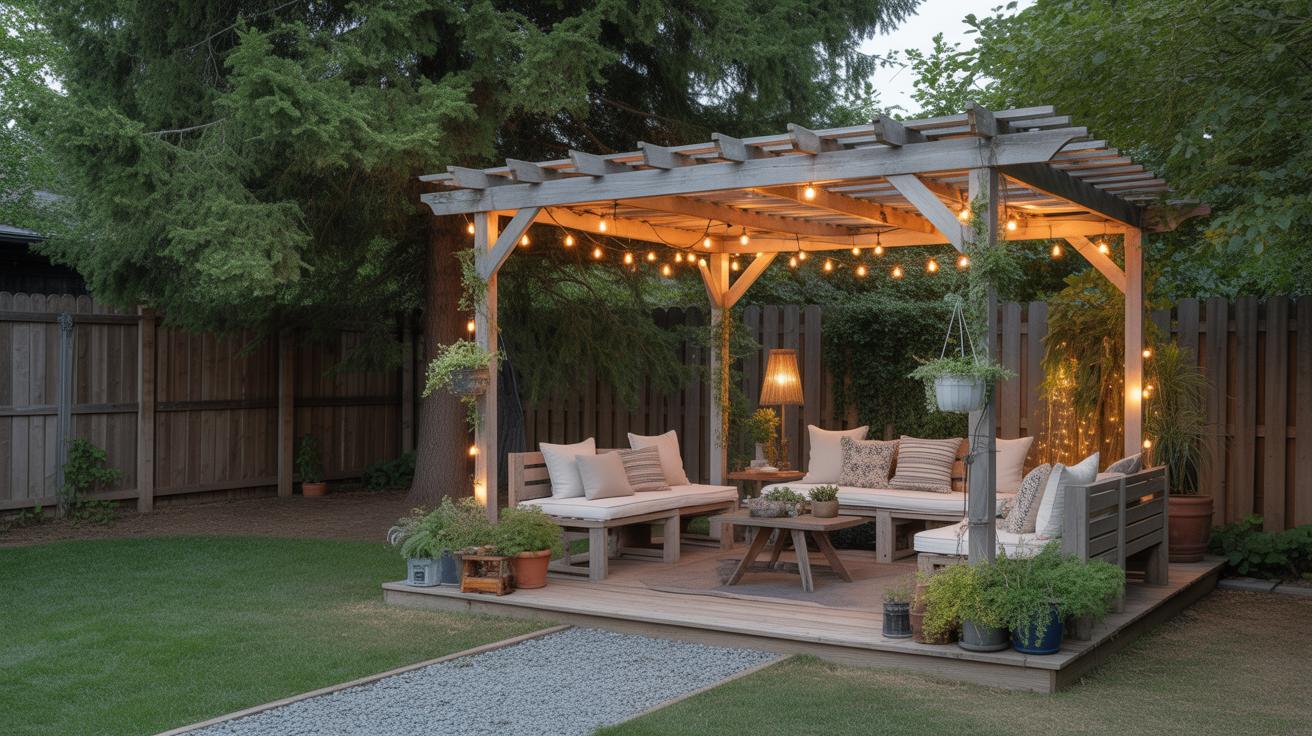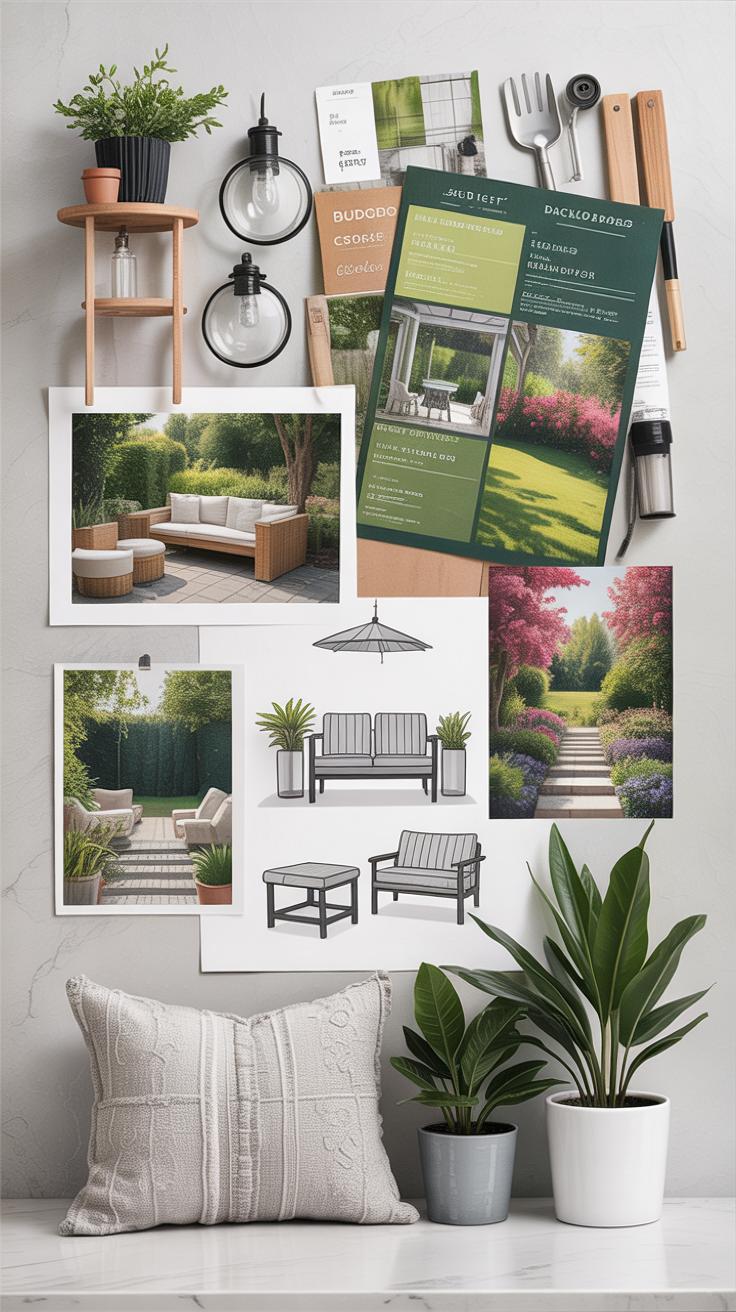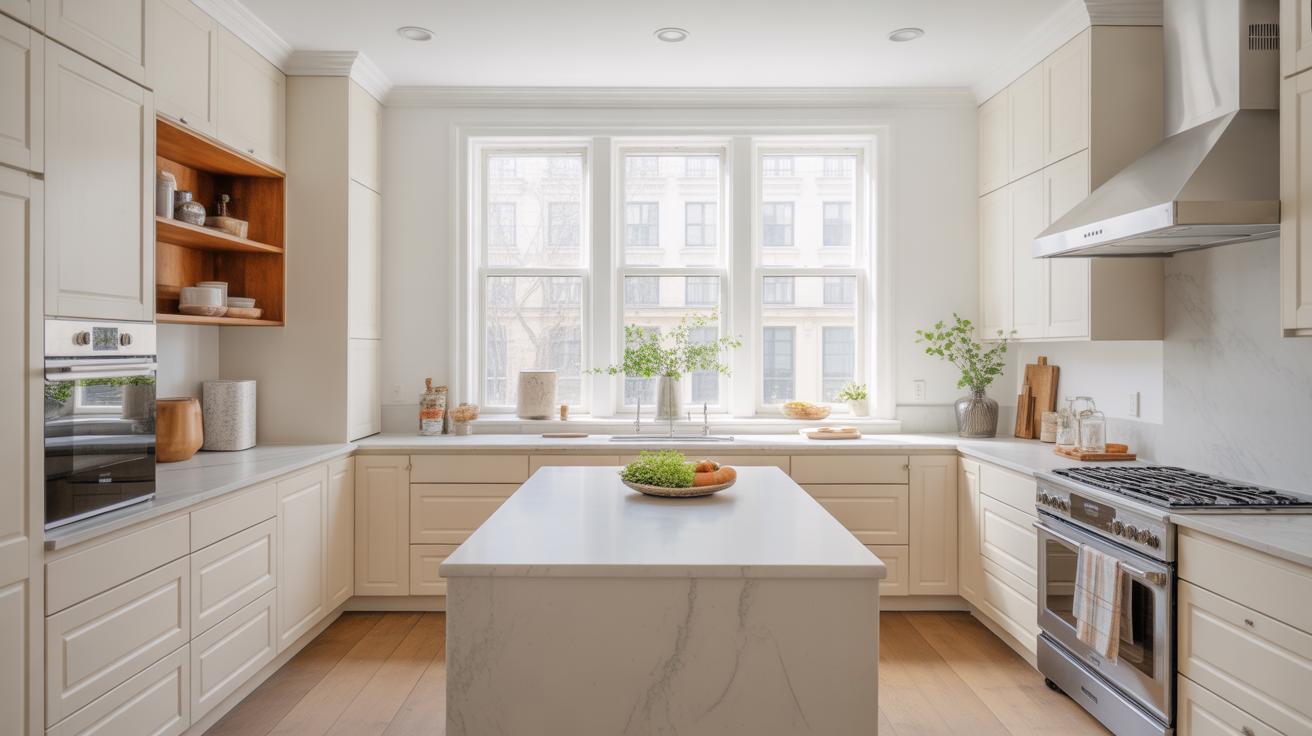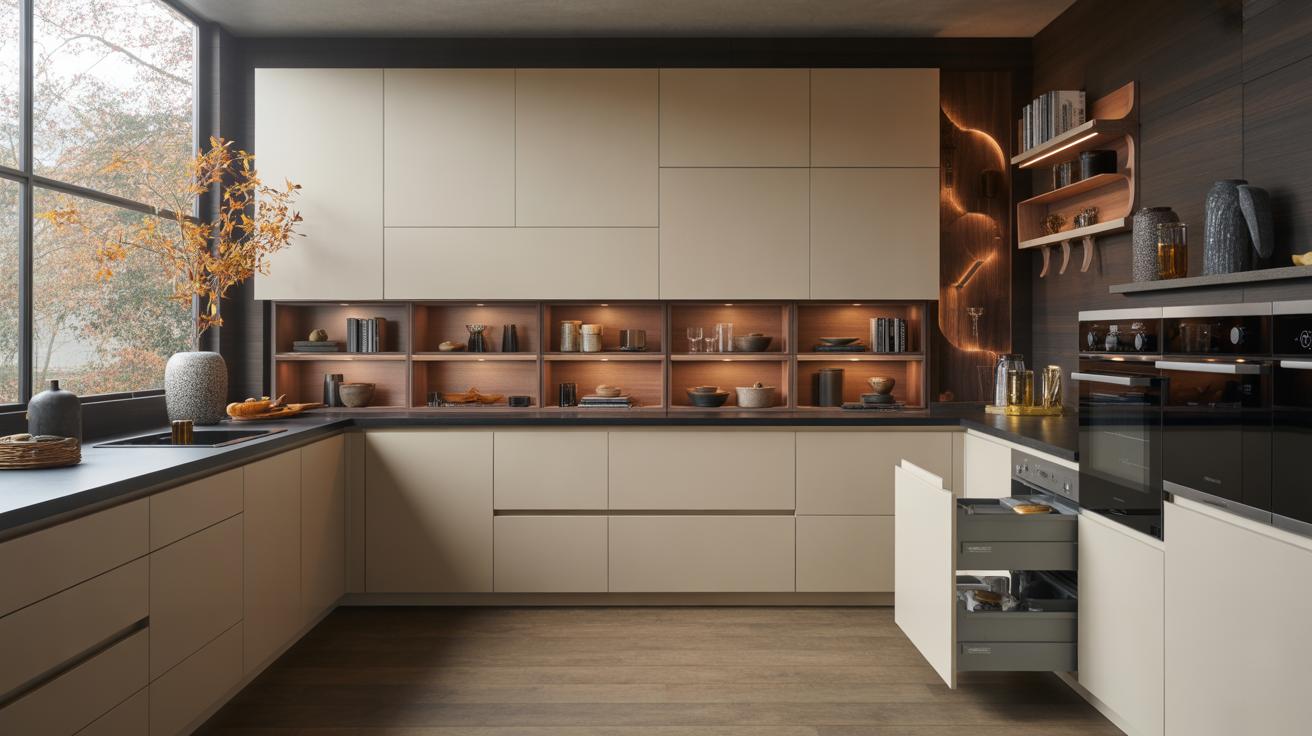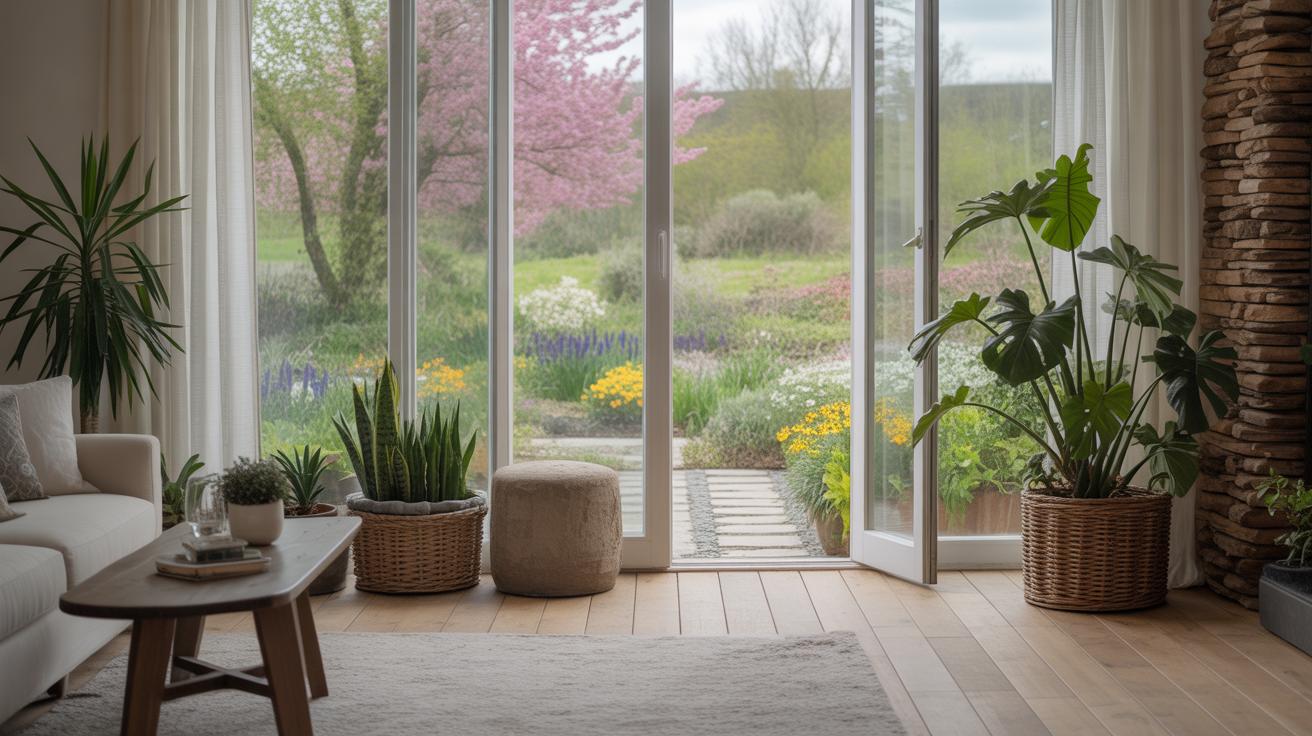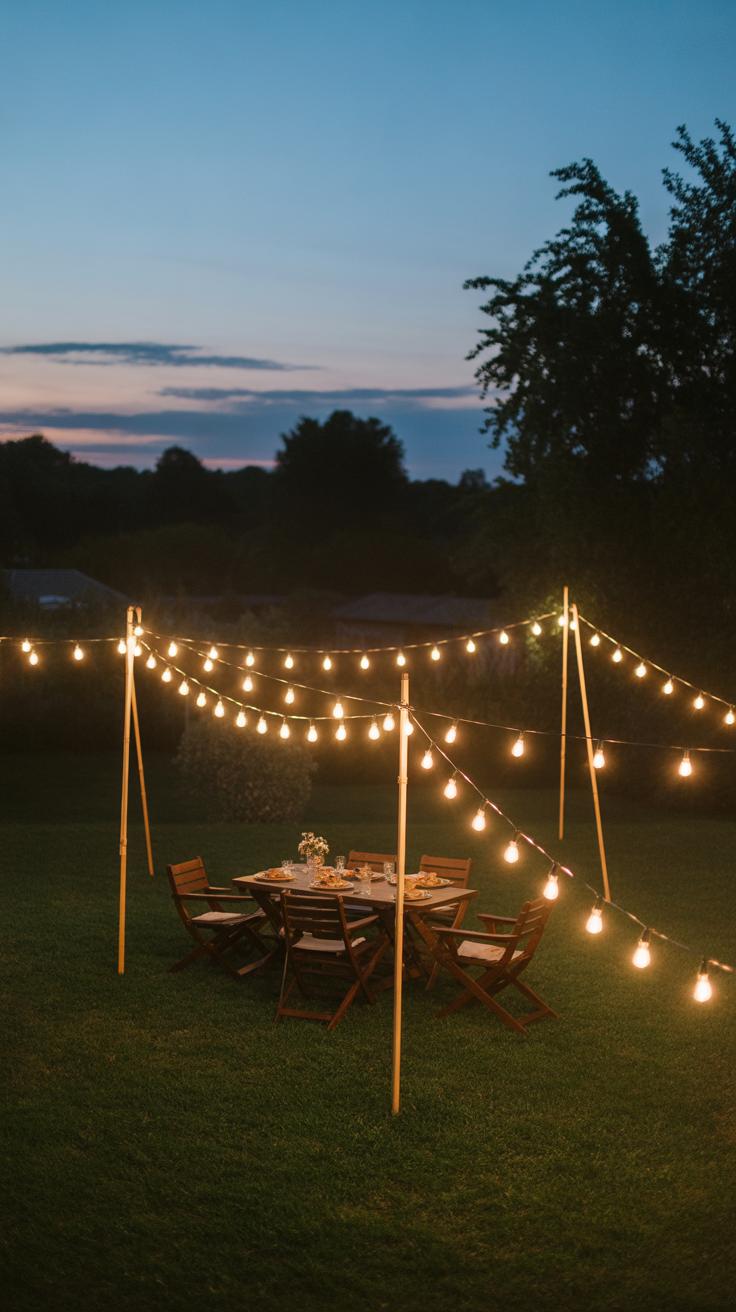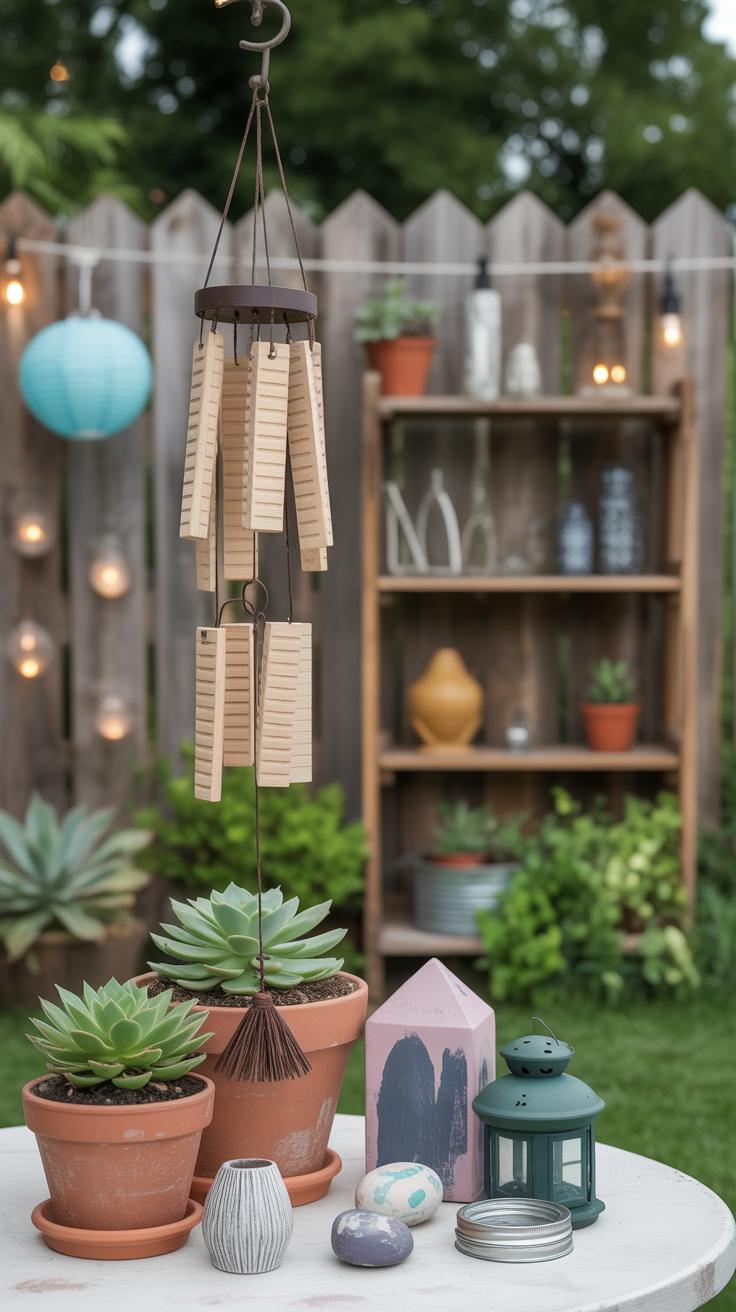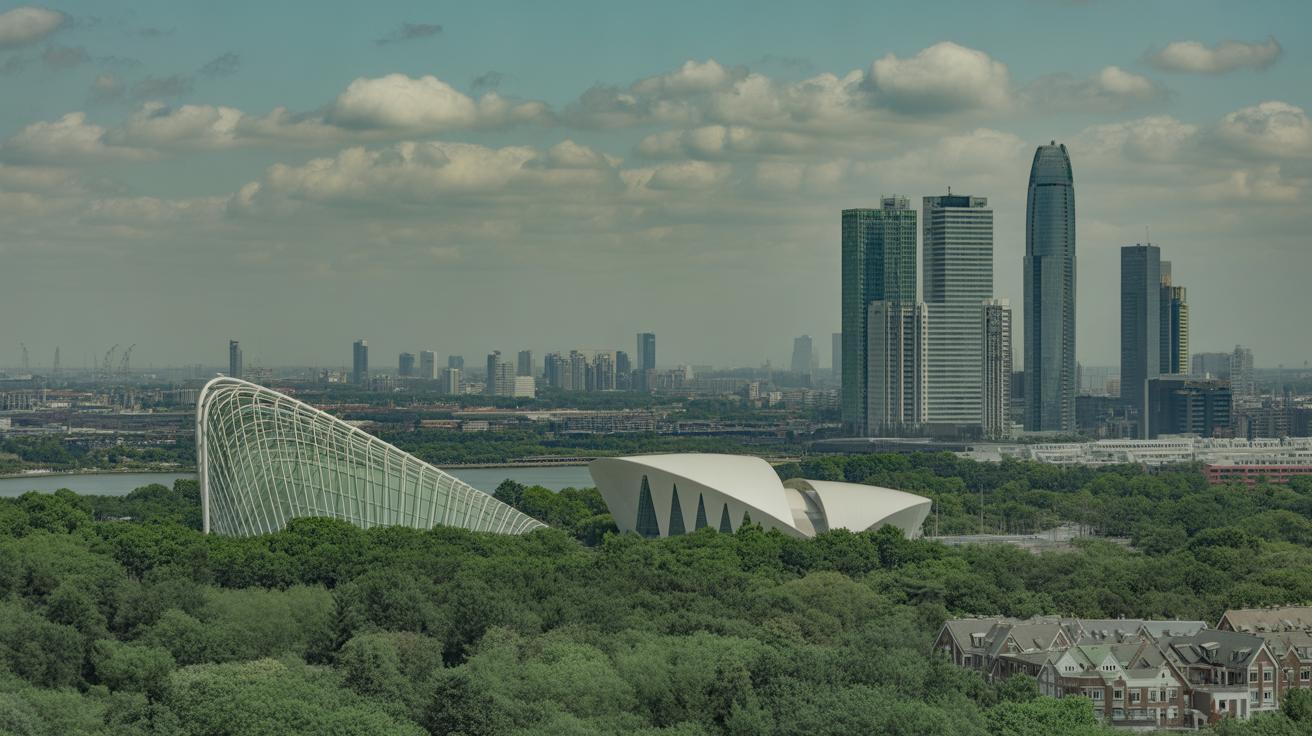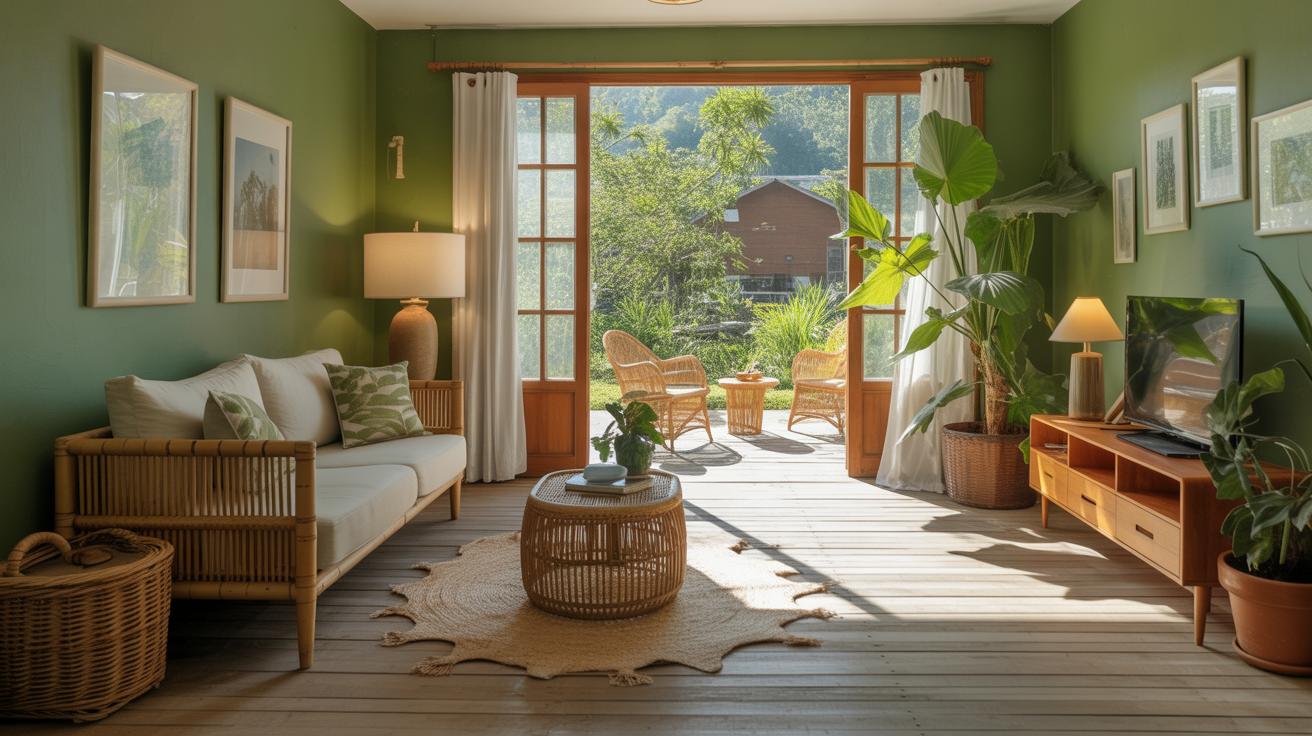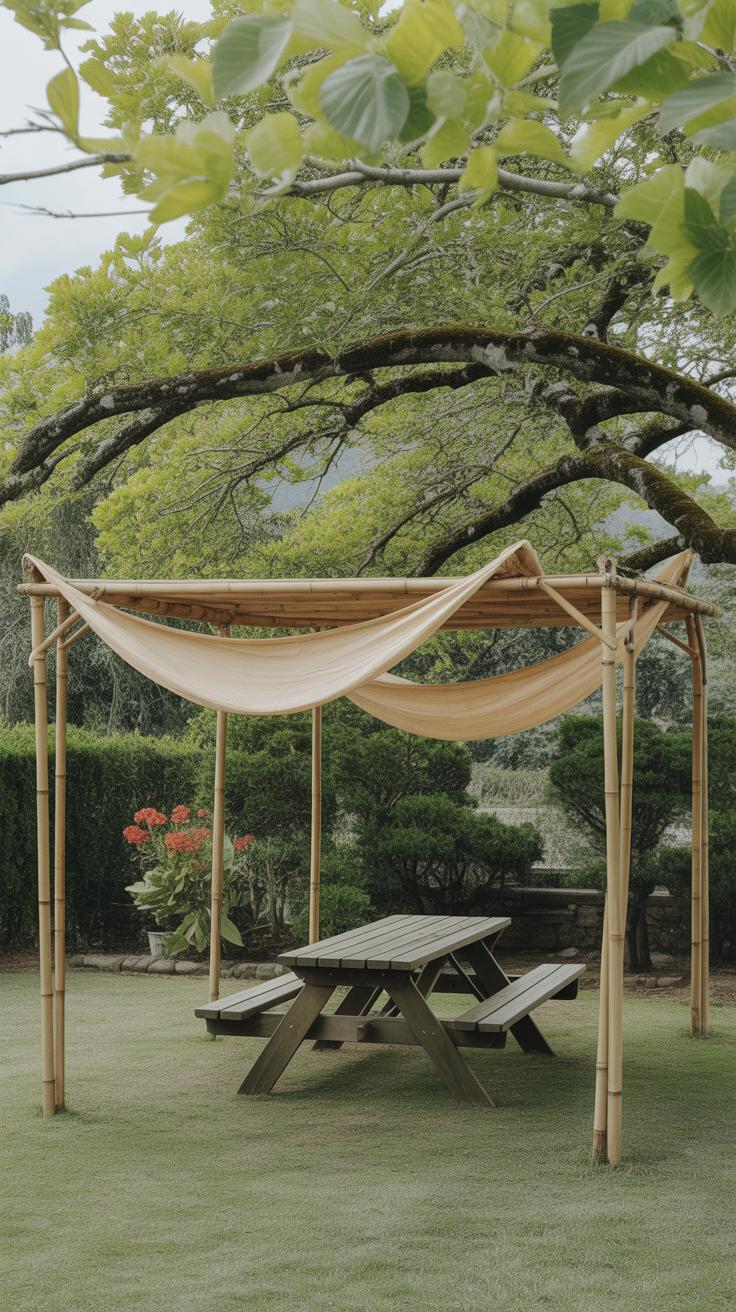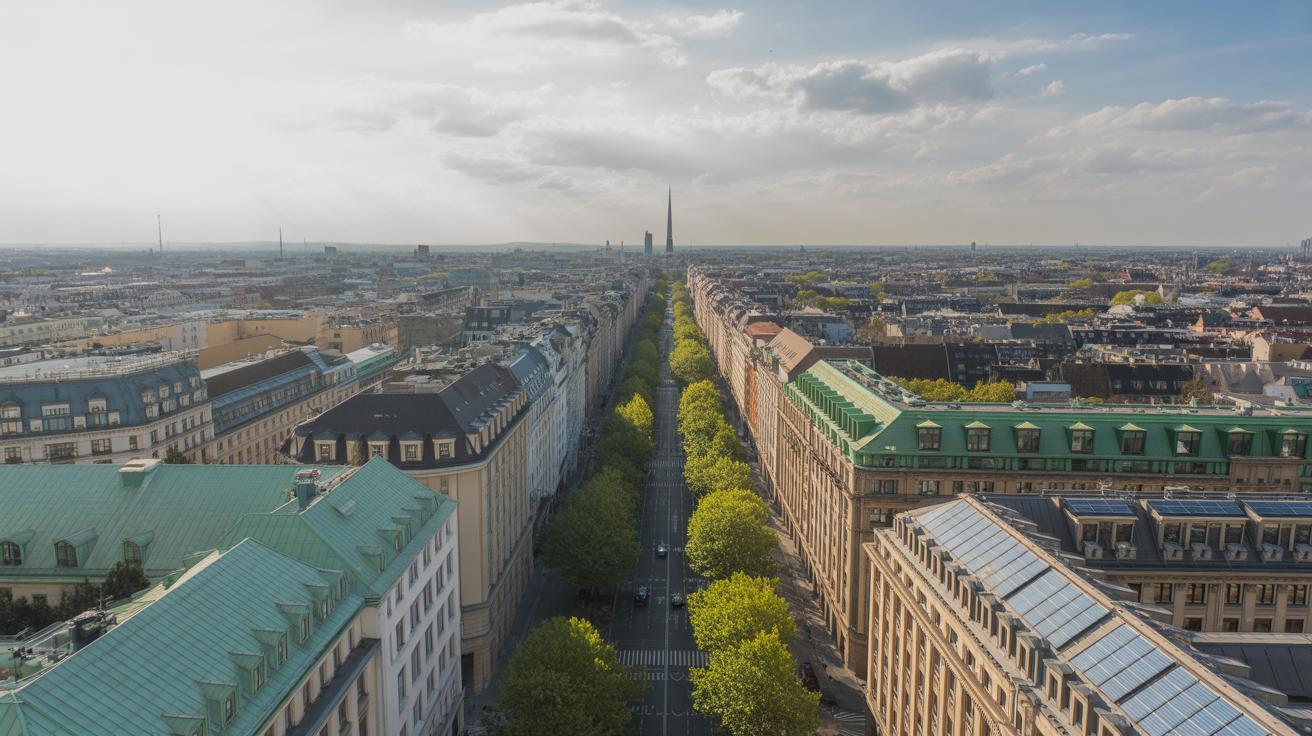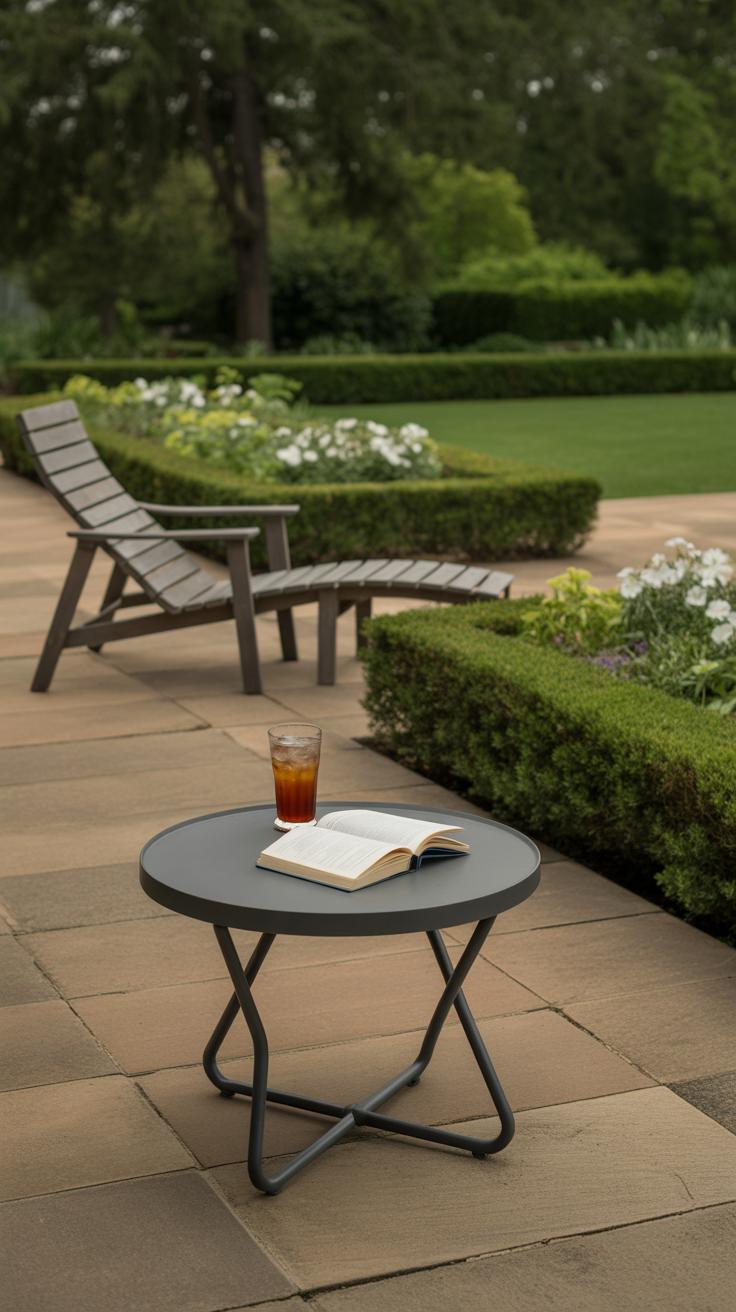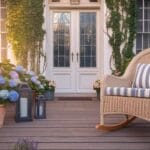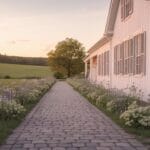Introduction
Creating a backyard outdoor oasis on a budget lets you enjoy a peaceful and inviting space without spending a lot of money. You don’t need a big budget to turn your backyard into a place where you can relax and spend quality time with family or friends. This article will guide you on how to plan and design your outdoor space in a smart and cost-effective way.
We’ll explore practical tips to help you make the most of your resources. From clever planning to choosing budget-friendly ideas, you will learn how to build a backyard oasis that fits your style and wallet. No matter the size of your yard, you can create a space that’s comfortable and beautiful without overspending.
Planning Your Outdoor Oasis Within Your Budget
Before you rush into buying plants or outdoor furniture, it’s really worth taking a moment to plan. Planning helps you avoid impulse buys that can quickly blow your budget. When funds are tight, every dollar counts. You want to know exactly what you’re spending on and why.
Start by setting a clear budget. Think about what you’re willing to spend overall and how much you want to allocate to different parts—like seating, greenery, or lighting. Prioritize what matters most to you. For example, maybe you want a comfy seating area more than fancy décor. Or perhaps you want a low-maintenance garden over a sprawling lawn.
Next, look critically at your current backyard. Is there a section already somewhat private or shaded that could work as your oasis? Defining the space keeps the project manageable. Don’t feel you must redo the whole yard at once; small zones can make a big impact. You might find that a neglected corner suddenly feels like a perfect spot with a little TLC.
Setting A Realistic Budget For Your Project
Deciding how much to spend means balancing your dreams with your wallet. Think through your monthly finances and any savings you can tap. Be honest with yourself about what feels comfortable—there’s no need to stretch too far.
Look for places to save, like opting for secondhand furniture or repurposing things you already have. You might spend less by planting seeds instead of full-grown plants or choosing simpler lighting options rather than elaborate fixtures. Yet, sometimes it pays to spend a bit more upfront on items that last, say a sturdy bench or weather-resistant cushions, so you avoid replacing them soon.
It’s a bit like cooking—some ingredients matter more than others. What deserves your investment? What can you cut back on? These questions keep your project realistic and focused.
Choosing Your Backyard Space Wisely
Picking the right spot for your oasis isn’t always obvious. You might assume the biggest, sunniest patch is best, but that’s not always the case. Think about how you want to use the space.
Sunlight matters if you want a garden full of blooms, but maybe a shady nook is preferable for a hammock or lounge chairs. Accessibility is key too—how easy is it to reach the spot from your house? Will you want to carry drinks or snacks out there?
Take note of existing features. Maybe there’s a tree that provides shade or a fence that offers privacy. These elements can shape how your oasis feels and reduce what you need to add. Sometimes, working with what you already have saves you both time and money, but you might want to rethink parts that don’t fit your vision.
Using Natural Elements To Create A Calm Environment
Natural elements bring a sense of peace that artificial décor often can’t match. Plants, water, and stone work together to shape a space where you might find it easier to slow down, breathe, and just be. You don’t have to spend a lot to get that effect—sometimes the simplest choices have the biggest impact.
Native plants deserve a closer look. They usually need less water and care because they’ve adapted to your local climate. That means less money on maintenance, and a better chance they’ll thrive. For example, if you live somewhere warm, succulents or lavender could be great options. Cooler areas might benefit from ferns or wildflowers. You could pick a few easy-grow species and watch your garden come to life with relatively little fuss.
Water features add subtle sounds that enhance calmness without requiring a deep pocket. Think about small fountains you assemble yourself from a container, a submersible pump, and river stones—pretty straightforward. Birdbaths made from old bowls or shallow basins are also inexpensive and invite wildlife, which adds a dynamic feel to your oasis. I’ve tried a DIY fountain with materials from a hardware store, and it surprised me how relaxing just a quiet trickle can be. Little projects like this can really boost the atmosphere without blowing your budget.
Creating Comfortable Seating Areas
Comfortable seating can make or break your backyard oasis. I’ve found, more than once, that no matter how nice the garden looks, if the seating isn’t inviting, people won’t stay long. It’s about more than just a place to sit — it’s where you relax, chat, and unwind. You don’t have to splurge on fancy outdoor sofas. There are plenty of budget-friendly options that work just fine.
Consider things like:
- Simple folding chairs with plush cushions you can swap out seasonally.
- A mix of poufs and floor cushions that add casual, laid-back vibes.
- Used or clearance furniture—sometimes all it needs is a fresh coat of paint or new fabric covers.
When it comes to layouts, think of clusters rather than long lines. Create small groupings that feel cozy and encourage conversation. A circle or an L-shape arrangement works well, letting everyone see each other without shouting over too much distance. You might want to position some seats under a natural shade or a DIY pergola, depending on your yard’s sun exposure.
DIY furniture projects are a clever way to save money, and they bring a personal touch. Pallets are a classic choice — with a little sanding and sealing, they can become benches or coffee tables. Recycled wood crates or old doors can be reassembled into unique seats or side tables. Don’t forget some cushions for comfort. Remember to check for splinters and nails before use, though, because your oasis shouldn’t come with a side of ouch.
How you arrange seating affects how you and your guests interact. It’s tempting to just line up chairs facing a focal point like a fire pit or water feature, but try mixing in angles. Putting seats at a slight turn towards each other invites more natural chatting. Keep pathways clear but intimate. And if you have the chance, place some seating with a view—maybe overlooking your garden or catching a gentle breeze. Shade? Always consider it, even in the briefest summer afternoons. There’s nothing relaxing about sitting baking in the sun.
Incorporating Lighting To Extend Outdoor Use
Lighting can change your outdoor space more than you might expect. It’s not just about seeing where you walk after dark—it adds warmth and makes your backyard inviting long after sunset. You don’t need expensive fixtures to get this effect. For example, solar lights are surprisingly bright these days. They don’t require wiring and come in various shapes: stake lights for paths, lanterns for tables, or spotlights to highlight trees. They charge during the day and turn on automatically at night, which feels almost like magic, even if it’s just simple tech.
String lights also create a cozy atmosphere without a big investment. Hanging them above seating areas or across fences instantly softens the space. I once draped plain white string lights over a pergola, and suddenly, the backyard felt like a different place—calmer, somehow. Candles add another layer—whether real or battery-operated—they give flickering light that makes everything feel more intimate. Try grouping candles in jars or placing them inside lanterns to protect from wind.
Choosing Budget-Friendly Outdoor Lighting
If you want to keep costs low, consider these options:
- Solar-powered stake lights for pathways
- Battery-operated LED string lights
- Affordable candle lanterns or hurricane lamps
- Clip-on LED spotlights powered by USB or batteries
These choices not only improve visibility but also add layers of light, turning your backyard from just a day-use area to a relaxing spot anytime. Safety gets a boost, too. Illuminating dark corners or steps helps prevent trips, which is something you might overlook until it’s too late. I think it’s easy to underestimate how much lighting impacts your day-to-day comfort outside.
Placing Lights To Highlight Features And Paths
Where you put lights matters as much as what type you pick. Aim to illuminate paths clearly so visitors don’t stumble. Place stake lights along edges or use string lights hung low, parallel to the ground. Over seating areas, hanging warm-toned string lights or lanterns creates a natural gathering spot. It subtly guides people toward those areas without feeling forced.
Don’t forget to highlight garden features or focal points. Spotlights can draw attention to a favorite tree or outdoor art. But beware of over-lighting; too many bright lights could spoil the mood. Usually, softer, dappled lighting works better—like string lights woven through branches. You might find the right setup by experimenting a bit—lighting isn’t always about perfection, and your space may need adjustments as you live in it.
Adding Personal Touches With Decorations
Small decorative items can truly make your outdoor space feel like your own little retreat. Sometimes, just a few well-chosen pieces—nothing flashy or expensive—can change the mood entirely. Think about placing homemade art around your seating area. Maybe a painted rock, a hand-drawn sign, or even simple nature prints framed in thrifted wood. These little touches bring character and won’t break the bank.
Another idea is to mix in colorful pots. You don’t have to buy brand-new ones. Repurposed containers, painted jars, or thrifted pots can be brightened up with a splash of paint. Fabrics can work wonders too: a patterned outdoor cushion or a piece of fabric draped over a table can add warmth and softness, all without a big price tag.
Using Handmade Decorations
Making your own decorations not only saves money but also creates something uniquely yours. For instance, you could craft a simple wind chime from old keys or driftwood. Maybe string some beads or use buttons to decorate plant stakes. It’s kind of fun, actually, watching how something simple can bring a smile to your face when you see it outside.
One thing I’ve noticed is that when you make something yourself, the imperfections make it special. It isn’t supposed to look perfect, and that’s the charm. Even a painted pot with uneven strokes feels cozier than something store-bought. You might be surprised how many ideas you can come up with just by repurposing common stuff around the house.
Choosing Colorful And Affordable Accessories
Color doesn’t have to come from pricey cushions or fancy décor. Sometimes just swapping out neutral fabrics for bright, inexpensive ones can lift the whole vibe. Outdoor curtains, napkins, or seat covers in bold blues, reds, or yellows add personality without expensive spending.
Clay pots, especially, offer great opportunities. You can buy plain ones cheaply and customize them. Imagine a set of small pots painted with geometric patterns or stripes. They don’t just hold plants—they become pieces of art. Plus, mixing and matching pots of different sizes and colors can feel lively rather than cluttered. So, before buying new fancy cushions or ornaments, try updating with colors and fabrics you already love—or that you can get for little money.
Making Use Of MultiFunctional Outdoor Furniture
Choosing outdoor furniture that serves more than one purpose can really change how your backyard feels and works. Think about a storage bench that not only provides seating but also hides away cushions or gardening tools. It’s like getting two pieces in one, which can save space and reduce clutter.
Small outdoor areas especially benefit from this kind of furniture. When every inch counts, folding tables let you open up the space when you eat or work outside, then fold away without creating a mess. This keeps your outdoor haven from feeling cramped or chaotic.
If you’re on a tight budget, there are many affordable options both in stores and online that don’t require spending a lot. Sometimes you can even take a simple bench or table and add your own storage compartments or hinges for folding. I recall turning an old wooden crate into a planter with a hinged lid—functional, cheap, and it adds a bit of charm.
Have you thought about what furniture pieces you use the most outdoors? Maybe starting with those and finding multi-use replacements could be the key. It’s a practical way to avoid overcrowding, but also keep things accessible and neat without breaking the bank.
Planning For Shade And Shelter
Creating Shade With Affordable Materials
Adding shade doesn’t have to mean breaking the bank. Simple options like umbrellas or shade sails can provide relief from the sun without a huge investment. You might find budget umbrellas at discount stores or online sales, and sails can be a DIY-friendly project if you have some basic sewing or rigging skills. Pergolas often sound pricey, but building a small one with reclaimed wood or even bamboo poles can work well. It may take some tinkering to get it sturdy, but the satisfaction of making your own shelter is worth it.
Light fabrics for sails or curtains can soften the sun while letting a breeze through, making your space comfortable on warmer days. If you’re a bit crafty, try hanging old bedsheets or lightweight tarps for temporary shade. It won’t last forever but will save you money and keep things cooler on a tight timeline.
Using Trees And Plants For Natural Cover
Nature itself offers some of the best, low-cost shade solutions. Planting fast-growing trees or tall shrubs along sun-heavy areas can not only block the sun but also add privacy and character. Think about species suited to your climate that don’t require a lot of upkeep—they might take a season or two to fill out, but in the long run, they save you money and effort.
Some people hesitate to plant trees because they seem like big commitments, yet starters in pots or saplings can be affordable and manageable if you space them properly. Plus, vines climbing a trellis or a fence add dappled shade and an extra layer of green, which feels calming even on hot days. If your yard is small or tricky, consider taller potted plants that you can move around as needed. It’s a flexible choice that keeps things lively without permanent changes.
When thinking about shading your oasis, mixing both plant life and simple structures often works best. The synergy adds dimension and cuts down on harsh sunlight without spending much. Have you tried blending these ideas before? Sometimes the most unassuming fixes turn out surprisingly well.
Maintaining Your Outdoor Oasis Without Extra Costs
Keeping your backyard oasis inviting doesn’t have to drain your wallet. Watering wisely is a good place to start. Early mornings or late evenings work best to reduce evaporation. You might try collecting rainwater with simple containers, which saves both money and keeps plants happy.
Cleaning often feels like a chore, but little routines make a difference without extra costs. Sweep leaves regularly before they pile up, and rinse down furniture with a hose instead of costly cleaners. Sometimes a quick wipe with a damp cloth is enough to keep things looking fresh.
Easy And Affordable Maintenance Routines
Small tasks done often can save you headaches later on. For instance:
- Remove dead leaves or flowers weekly to encourage growth and avoid pests.
- Check soil moisture with your finger—sometimes plants need less water than you think.
- Keep outdoor cushions dry and store them overnight to avoid mildew without buying special covers.
- Trim back overgrowth in small bursts rather than letting it become overwhelming.
I’ve found that spending just 10 minutes a day outdoors, maybe with a cup of coffee, makes all this feel less like a task and more like a routine that actually soothes my mind.
Preparing Your Oasis For Changing Seasons
Seasons change, and so does the work your oasis needs. When cooler months approach, move potted plants indoors or group them together to create microclimates. Wrapping plants in old sheets can protect against frost without spending on fancy covers.
For furniture, a simple tarpaulin or old blanket can provide basic protection from rain and cold. If you want to avoid rearranging everything, elevating items slightly off the ground stops moisture damage and is easy to do with bricks or wood scraps you might already have.
Thinking about your oasis year-round, rather than just in peak season, helps you spread out tasks and expenses. It may feel like extra effort, but it usually means less repair or replacement costs later—and that’s something I keep reminding myself.
Enjoying Your Outdoor Oasis Every Day
Finding ways to actually use your backyard oasis is key to making it a true retreat. Sometimes, we spend so much time planning and setting up that the space just sits there, unused. Try simple activities that pull you outside daily—reading a book in the morning light or sipping your evening tea by the fire pit. Even doing small tasks like stretching or meditating can anchor you to the space more than you expect.
Think about turning parts of your oasis into a spot for hobbies you already enjoy. Maybe you like sketching, gardening, or trying out yoga poses—your backyard can be the perfect, quiet backdrop. It doesn’t have to be elaborate; even a cozy chair or a small table makes a difference.
Creating A Routine To Visit Your Oasis
Getting outside becomes easier if it’s part of your daily rhythm. Some folks set reminders on their phones to pause for a few minutes outdoors. Others leave their favorite mug on the patio or keep a book outside as a visual nudge. The trick is to treat your oasis like a room in your home—one you’re expected to use regularly.
Sometimes, it helps to link outdoor time with existing habits. For example, stepping outside right after breakfast might eventually feel as natural as brushing your teeth. Don’t worry if you occasionally forget or skip it. The idea is to make outdoor time appealing, not another chore.
Engaging Family And Friends In Your Sanctuary
Your outdoor oasis can be a shared space, not just a personal escape. Invite family or friends over for casual meals—grilled dinners or weekend breakfasts outside work well. Playing simple games like cards, bocce ball, or even charades can turn the yard into a lively gathering place.
Quiet conversations in fresh air sometimes feel more meaningful than indoor chats. If your friends or family enjoy solitude, leaving a few comfortable spots with cushions or hammocks gives them a chance to unwind alongside you. You might find that your oasis becomes where relationships quietly deepen, not just where you escape.
Conclusions
You can create a backyard outdoor oasis on a budget by focusing on smart planning and affordable ideas. Taking time to organize your space and pick the right elements can save money and bring great results. Small projects and thoughtful choices lead to a space that feels welcoming and peaceful.
Remember, your backyard oasis reflects your personality and needs. Keep your approach simple and flexible, and enjoy the comfort and joy your outdoor space offers. This is your chance to turn your backyard into a favorite spot for relaxation and fun without stress over costs.

